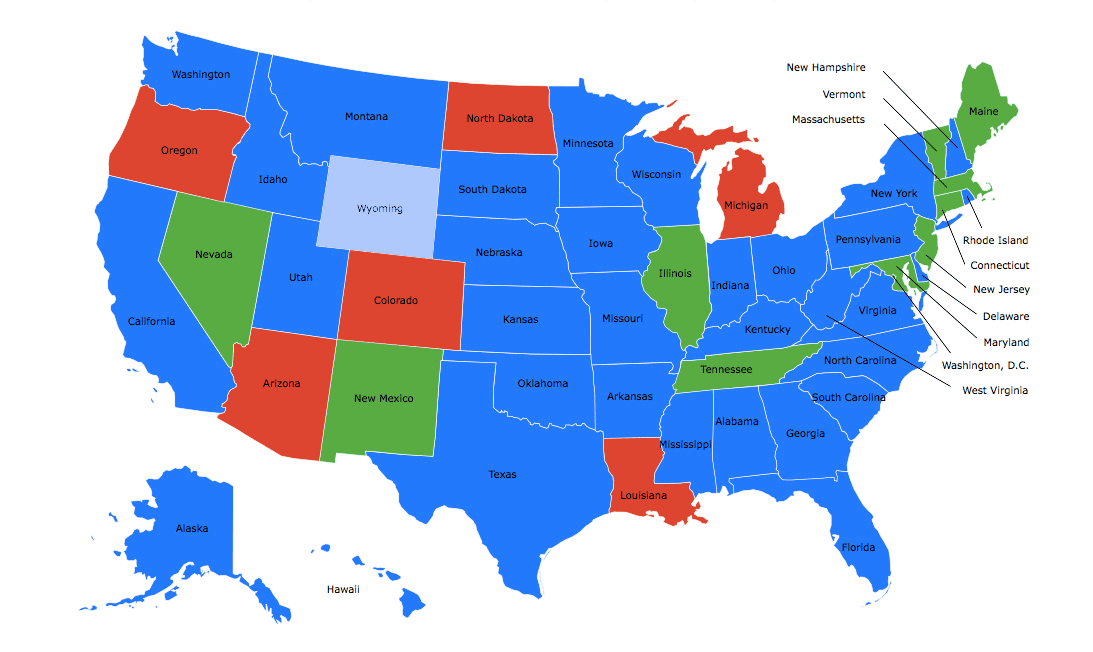New Fordham ESSA Report (Happily) Finds States Moving Beyond NCLB Limitations With New Education Plans

A new report from the conservative think tank rated the 17 plans so far submitted to the Education Department in three areas: clear, intuitive school ratings; a focus on all students; and fairness to high-poverty schools.
Those three categories represented the biggest parts of a state plan and, particularly the latter two measures, showed how far states moved away from the confines of No Child Left Behind, said Brandon Wright, editorial director at Fordham and one of the report’s authors.
“We were really concerned that because the federal government under NCLB was sort of so heavy-handed for so long that states would’ve gotten used to sort of being told what to do in so many respects … that there would be growing pains,” he said.
Several groups have released independent evaluations of state ESSA plans, including a group of peer reviewers led by Bellwether Education Partners and the Collaborative for Student Success, which rated state plans in nine areas.
(The 74: Independent Review of ESSA Plans Rate States Strong on Accountability, Weak on Counting All Kids)
For each area, the Fordham reviewers rated the individual states as weak, medium, or strong. The report only measures states’ ratings of elementary and middle schools “for simplicity’s sake.” Many states struggled to come up with a measure of growth for high school as ESSA requires high schoolers to be tested only once.
Arizona, Colorado, and Illinois got top marks from Fordham, earning “strong” in all three categories.
North Dakota’s plan was rated “weak” in all three areas. Reviewers didn’t rate Michigan’s plan in any of the three categories because it leaves many aspects to be decided, including whether it will assign annual ratings to schools.
(The 74: This Week’s ESSA News — New Mexico, Louisiana Rise to the Top; Michigan, Arizona Falter)
A state plan would earn top marks for clear school ratings if it uses an A–F, five-star, or similar rating. Plans with easy-to-understand text labels would get a medium rating, while states that rate schools with too many data points or unclear labels would be deemed weak.
“There’s simply no excuse for states to assign labels that are impossible to parse, which strikes us as an Orwellian approach to keep interested parties in the dark about school quality,” Wright and co-author and Fordham president Michael Petrilli wrote.
Eleven of the 17 plans got “strong” ratings in this category. North Dakota got a “weak” for using a data dashboard rather than a summative rating, as did Oregon, for forgoing an annual rating entirely.
The main flaw of No Child Left Behind — its rating of schools by their ability to get students to a set proficiency standard — was the impetus behind Fordham’s second and third ratings, the authors said.
The report’s ratings on “focusing on all students” looks for state plans that include scores outside those of the “bubble kids” just below or just above proficiency status that many schools focused on in the NCLB years. That mindset ignored both advanced students and those unlikely to ever get to proficiency, the Fordham reviewers wrote.
“Such neglect is inequitable. It’s also bad for social mobility and harmful to the country’s long-term prosperity,” the authors wrote, arguing that low-income, high-achieving students are most harmed by placing such emphasis on the proficiency cutoff.
To earn top marks on Fordham’s rankings for focusing on all students, a state plan must have at least 50 percent of its performance ratings based on a performance index (one that, for example, gives partial credit for students at a basic achievement level, full credit for students at proficiency, and extra credit for advanced students), average scale scores (as opposed to how many got to proficiency), or a measure of growth for all students (accounting for how far students progressed, not where they started).
(The 74: Barnum — The Growth vs. Proficiency Debate and Why Al Franken Raised a Boring but Critical Issue)
Eight states earned top marks on this measure. Colorado, for instance, was rated highly for its plan that bases 35 percent of a school’s rating on average scale scores and 60 percent on growth of all students.
The Fordham reviewers also looked at how well states were rating schools by measures fair to high-poverty schools, with the highest ratings given to those that gave at least 50 percent of their ratings based on growth of any type.
NCLB-era measures of proficiency on tests and graduation rates are strongly correlated to student demographics and prior achievement, meaning they were more reflective of the students at a school than how effective the school was, Wright and Petrilli wrote.
Only four states got top marks on this measure. One of them, Tennessee, will rate schools on two growth measures totaling 80 percent of a school’s overall rating, with 35 percent coming from growth of all students, and 45 percent from growth to proficiency.
“States that embrace this approach should find that at least some of their high-poverty schools earn good to excellent ratings — because they deserve them,” they wrote.
Fordham plans to rate the other state plans, which must be submitted by mid-September, on the same scale, Wright said.

Get stories like these delivered straight to your inbox. Sign up for The 74 Newsletter

;)

